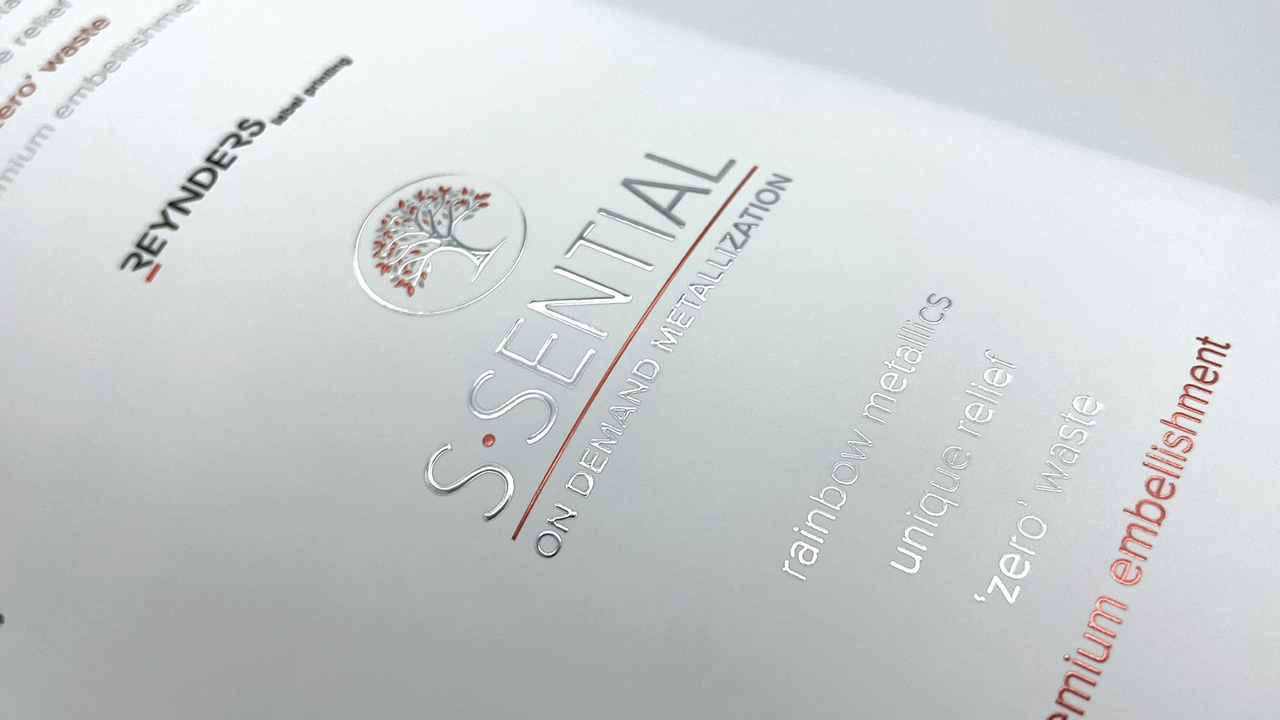Vinograf focuses on agility
Chile’s youngest label converter serves 10-15 clients – all vineyards – with just one press. Vinograf – the brainchild of industry veteran Fernando Aravena – is dedicated to digital wine label printing, providing small and medium-sized vineyards in Chile with short runs of high quality labels.
The client roster is kept deliberately low, so the company can maintain flexibility and focus on personalized customer service.
Aravena has more than 30 years’ experience in the label industry. He ran Chilean converter Etiprak before its acquisition by York Cameo, then co-founded Tag Wine in Mendoza, Argentina, and Primitiva Label in Lima, Peru. He ran Collotype Labels Chile-Argentina before he started Vinograf in Santiago and Tinto Labels in Mendoza, his latest ventures.
Founded in late 2015, Vinograf began operating in November 2015 with an HP Indigo WS6600 digital press and two finishing machines, a Grafisk Maskinfabrik (GM) DC330FB flat-bed hotfoil and silkscreen system and a Rotoflex with Nikka inspection.
Founded in late 2015, Vinograf began operating in November 2015 with an HP Indigo WS6600 digital press and two finishing machines, a Grafisk Maskinfabrik (GM) 3300 and a Rotoflex.
Vinograf has just nine employees, with operators trained to use all the machines to allow flexibility. Aravena was joined in August 2016 by general manager Hernan Vega, who has a similarly long history in the Chilean label market and with whom he worked at both Etiprak and Collotype. One of the machine operators, Alexis Fuentes, has worked with the pair since their days at Etiprak.
There is no sales department: five clients came with Aravena when he founded Vinograf, and more have arrived thanks to designer referrals. The company prints two million labels a month – 60,000 to 70,000 sqm. Average run length is 5,000 to 10,000 labels, with many orders coming in at under 1,000 labels.
‘Clients come to us for short runs with very quick turnaround,’ says Vega, who overseas day-to-day operations. ‘One recently rang us as they had a shortfall of 180 labels. We delivered them within the hour.’
Competitive
Thanks to the country’s highly developed export market for wine, the Chilean label industry is extremely competitive. There are many label converters with advanced technology, and more digital label presses per capita than any country in Latin America.
‘As a result,’ says Vega, ‘quality is not such a differentiating factor in Chile. There is lots of top-level technology. Our idea is to focus on quick, personalized service. We want to remain small and agile.
‘Files arrive from clients and two days later they can come to the factory to look at the results, which is traditional in Chile. We provide very personalized attention. They have a good relationship with our head of pre-press, Camila Fuenzalida. A few times a month, a client will call to request labels within 24 hours, and we are always able to supply them.’
One client sells most of its wine to the Chinese market, and Vinograf’s service includes advice about export requirements and challenges, and material usage.
With the HP Indigo WS6600 currently running one shift, there is plenty of room for growth. Vinograf has recently added a GM DC300 Mini finishing system to complement the GM DC330FB and to focus on reverse labels, which require less added-value converting options. ‘The GM DC330FB is very easy to operate,’ says Vega. ‘Set-up is quick and registration is excellent. Having local service and support [through GM’s Latam region office in Santiago, headed by Jos Kabouw] has also been a great advantage.’
Label Traxx MIS allows 24-hour quoting, and is being extended to link production and gather data. ERP software administers the company’s finances. Vinograf’s two main material suppliers are Avery Dennison and Wausau Coated Products. Cold foil comes from Kurz, varnishes from Actega, and dies from Wink, which operates a 24-hour delivery service. ‘We use top-of-the-range technology in all areas,’ says Vega.
Stay up to date
Subscribe to the free Label News newsletter and receive the latest content every week. We'll never share your email address.


